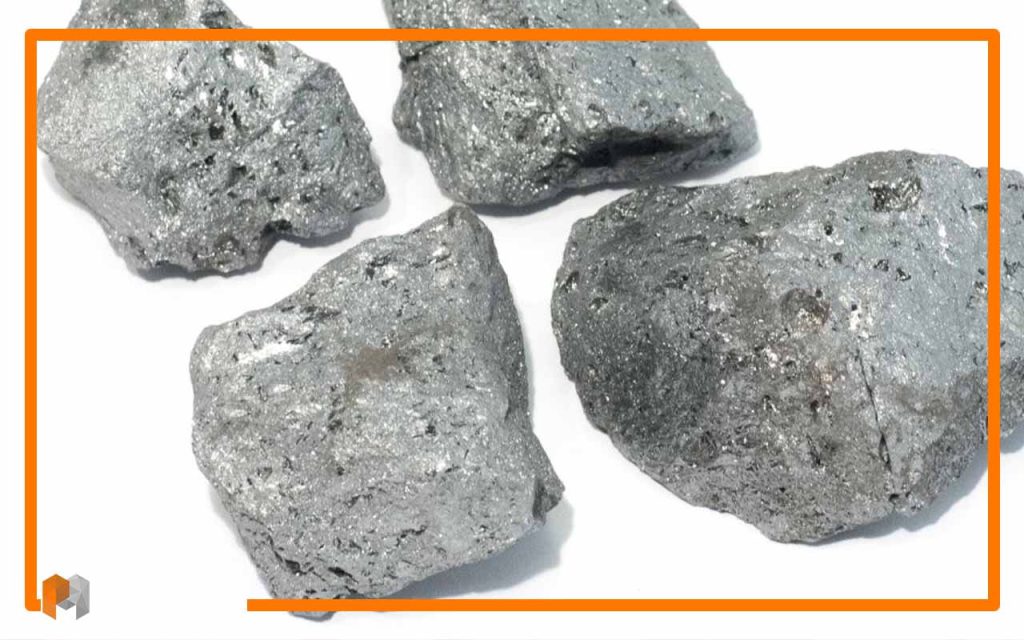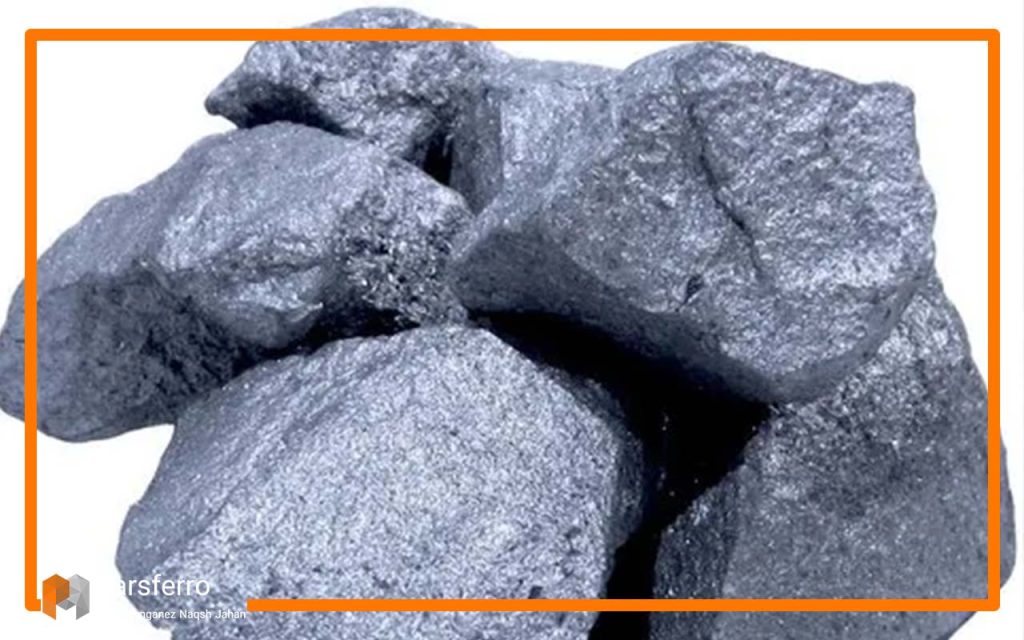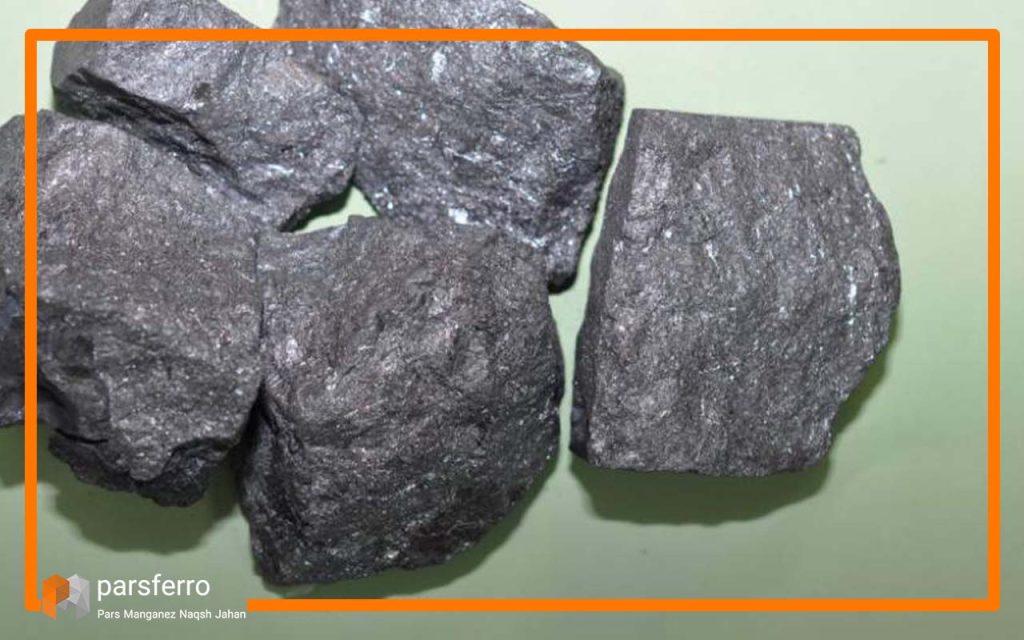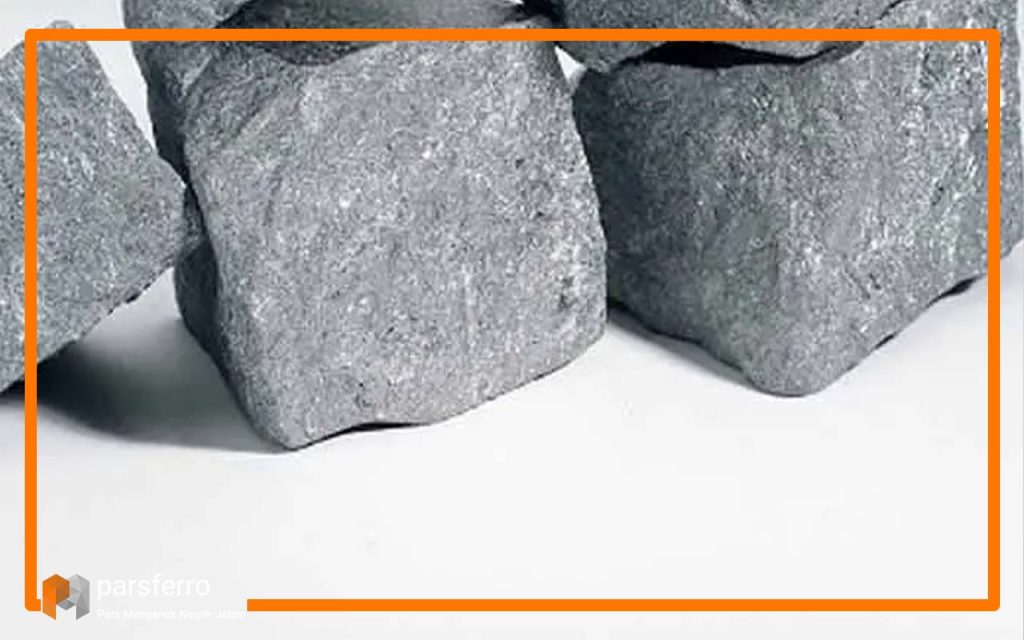Ferrosilicon is an alloy comprised of silicon and iron and It typically contains 15-90% silicon. The primary use of ferro silicon is in the production of steel and cast iron in metallurgy. ferro silicon added to molten iron or steel to deoxidize and improve its casting properties. In this article, we read more about ferro silicon including its chemical composition, properties, applications and the process by which ferrosilicon is made.
“Pars Manganese Naqsh Jahan stands as a leading supplier of high-quality manganese products globally, catering to diverse industrial applications. Our experienced team is ready to assist you in identifying the optimal product for your specific application, You can contact us via e-mail.
ferro silicon chemical composition
Ferro silicon is indeed a binary alloy of iron (Fe) and silicon (Si). The chemical formula for ferro silicon is typically represented as FeSi. The ratio of iron to silicon can vary, resulting in different grades of ferro silicon. The most common grades include Ferro silicon 75, Ferro silicon 72, and Ferro silicon 70, which indicate the percentage of silicon in the alloy. For example, Ferro silicon 75 means the alloy contains approximately 75% silicon and 25% iron. The chemical composition may also include trace amounts of other elements depending on the source and production process.
read more: ferromanganese composition
Keep in mind that these compositions can vary between different producers and specific product specifications. It’s always a good idea to check the product specifications provided by the manufacturer for precise information on the chemical composition of a particular ferro silicon alloy. The exact chemical composition can vary depending on the specific grade and manufacturer, as different applications may require slightly different formulations. However, here is a typical range for the chemical composition of ferro silicon:
- Silicon (Si): 70-75%
- Iron (Fe): 20-30%
- Aluminum (Al): 2% max
- Calcium (Ca): 0.5% max
- Magnesium (Mg): 0.5% max
- Titanium (Ti): 0.5% max
- Manganese (Mn): 0.5% max
- Phosphorus (P): 0.05% max
- Chromium (Cr): 0.3% max
- Vanadium (V): 0.1% max
- Barium (Ba): 1% max
The calcium-to-aluminum mass ratio (Ca/Al) is typically kept low, as excessive calcium can lead to brittleness in the alloy. It’s important to note that these are general ranges, and the specific composition may vary according to the intended use and manufacturer specifications. If you have a specific grade or application in mind, it’s recommended to check the product specifications provided by the manufacturer.

Ferro silicon grades
According to ferro silicon chemical composition, ferrosilicon is divided into four grades:
- Low-carbon ferro silicon and ultra-low-carbon ferro silicon: These grades of ferro silicon are employed to prevent the reintroduction of carbon during the production of stainless steel and electrical steel.
- Low-titanium (high-purity) ferro silicon: Utilized to prevent the formation of titanium nitride (TiN) and titanium carbide (TiC) inclusions in electrical steel and certain special steels.
- Low-aluminium ferro silicon: This type of ferro silicon is used to avoid the creation of hard aluminium oxide (Al2O3) and aluminium oxide–calcium oxide (Al2O3–CaO) inclusions in various steel types.
- Special ferro silicon: The term “special ferro silicon” encompasses a diverse range of customized products containing additional alloying elements, catering to specific requirements in various applications.
Click here to view the properties of ferromanganese.
What is the ferro silicon production process?
The production of ferro silicon involves a series of steps, including the selection of raw materials, smelting, chemical reactions, separation, and processing. Here’s a more detailed breakdown of how ferro silicon is made:
1- Selection Raw Materials
Silica (Silicon Dioxide): Typically sourced from quartz or sand.
Iron Ore: Provides the iron component, often in the form of iron oxides like hematite or magnetite.
Carbon: typically in coke or coal form and acts as a reducing agent to remove oxygen from the iron ore
2- Preparation of Raw Materials
The raw materials are carefully selected and prepared. This may involve crushing and grinding to achieve the desired particle size.
3- Smelting in a Furnace
The prepared raw materials are mixed and charged into a submerged electric arc furnace or a production furnace. The furnace is operated at high temperatures, typically around 2000 to 2200℃.
4- Chemical Reactions
- Reduction of Silica:
SiO2+2C→Si+2CO Silica is reduced to silicon, and carbon monoxide (CO) is produced.
- Reduction of Iron Oxide:
Fe2O3+3C→2Fe+3CO
Iron oxide is reduced to iron, and carbon monoxide is produced.

5- Formation of Ferro silicon
The silicon produced from the reduction of silica and the iron produced from the reduction of iron oxide combine to form ferro silicon.
6- Separation
The molten ferro silicon, along with impurities like slag, is tapped from the furnace. The molten material is then cast into molds or further processed to obtain the desired size and shape.
7- Cooling and Crushing
The cast ferro silicon is allowed to cool and solidify. The solidified material is then crushed into the desired size fractions.
8- Packaging and Distribution
The final ferro silicon product is packaged and prepared for distribution to various industries.
Note: Throughout the process, precise control of temperature, composition, and other variables is crucial to ensure the desired properties of the ferro silicon. The specific details of the production process may vary depending on factors such as the type of furnace used, the composition of the raw materials, and the desired characteristics of the final ferro silicon product.
Physical and chemical properties of ferro silicon
The table below lists the most important physical and chemical properties of ferro silicon:
Certainly, I can present the information in a tabular format for better readability:
| Property | Value |
| Molecular Weight | 28.0855 g/mol |
| Melting Point | FeSi 45: 1215°C to 1300°C FeSi 75: 1210°C to 1315° FeSi 90: 1210°C to 1380°C |
| Boiling Point | 2355°C |
| Density | FeSi 45: 5.1 g/cm³ FeSi 75: 2.8 g/cm³ FeSi 90: 2.4 g/cm³ |
| Appearance | Spherical or irregular particles, lumps, crushed or milled |
| Corrosivity | Resistant to corrosiveness and abrasiveness |
| Color | Silvery grey to dark grey |
| Odor | Odorless; and when inhaled can be dangerous |
| Solubility | May react with water to hydrogen production. |
| Combustibility | Dust particles are combustible |
| Specific Gravity | FeSi 75: 3.01 |
Note: The specific gravity mentioned is for FeSi 75, and it can vary for other compositions of ferrosilicon.
use of ferro silicon in the steel industry
Ferrosilicon is a crucial alloy used in steelmaking, playing a significant role in the production of steel. Here are some key aspects of the role of ferrosilicon in the steelmaking process:
- Deoxidation and Desulfurization: Ferrosilicon is commonly used as a deoxidizing agent in the steelmaking process. It helps to remove oxygen from the molten steel by forming stable oxides, such as silica (SiO2) and ferrous oxide (FeO). It also contributes to the desulfurization of steel by reacting with sulfur to form stable sulfides. This is essential because sulfur impurities can negatively impact the mechanical properties of steel.
- Alloying Element: Ferrosilicon is an alloying element that introduces silicon into the steel. This has several beneficial effects on the properties of steel, including increased strength, hardness, and resistance to corrosion. Silicon also acts as a deoxidizer and helps control the grain size of the steel, contributing to better mechanical properties.
- Control of Grain Size: The addition of ferrosilicon helps control the grain size of the steel during solidification. Fine-grained steel typically exhibits improved mechanical properties compared to coarse-grained steel.
- Ferroalloy Production: Ferrosilicon is produced by the reduction of quartz (silica) with carbon in an electric arc furnace. The resulting alloy typically contains iron and silicon in varying proportions, depending on the specific grade of ferrosilicon required for the steelmaking process.
- Slag Reduction: When producing stainless steels, the inclusion of silicon plays a crucial role in diminishing chromium oxides in the molten metal. This, in turn, enhances the recovery of metallic chromium.
- Fuel Utilization: In certain steel mills, ferrosilicon is introduced into the melt to be subsequently burned off, generating heat within the furnace. This process effectively reduces energy costs in steel production.

Industrial Applications of Ferrosilicon alloy
Ferro silicon is commonly used in various industrial applications due to its unique properties. Some of the key industrial applications of ferro silicon alloy include:
- Steel and Iron Production: Ferrosilicon is a deoxidizing agent in the production of steel and cast iron. It helps remove oxygen from the molten metal, preventing the formation of oxides that can weaken the final product.
- Ferrous Foundries: In foundries, ferrosilicon is used as a source of silicon to enhance the properties of cast iron, such as fluidity and castability. It also helps in controlling the morphology of graphite in cast iron.
- Ferro silicon Magnesium (FeSiMg) for Ductile Iron Production: Ferrosilicon alloyed with magnesium (FeSiMg) is used in the production of ductile iron. This alloy promotes the spheroidal graphite formation in the iron, improving its ductility and strength.
- Ferrosilicon for Heavy Media Separation: In the mining industry, ferrosilicon is used in heavy media separation processes. It is added to water to form a dense media, which is used to separate minerals based on their density.
- Ferrosilicon for Welding Electrodes: Ferrosilicon is used in the manufacturing of welding electrodes. It improves the arc stability and enhances the mechanical properties of the weld.
- Chemical Industry: Ferrosilicon is used in the chemical industry for the production of various silicon-containing compounds. It can also be used as a reducing agent in certain chemical reactions.
- Alloying Element in Steel: Ferrosilicon is sometimes used as an alloying element in the production of special steels. It imparts certain desirable properties to the steel, such as increased strength and corrosion resistance.
- Magnesium Ferrosilicon for Desulfurization: Magnesium ferrosilicon is used in the desulfurization of iron and steel. It helps reduce sulphur content in the molten metal.
- Magnesium Ferrosilicon for the Production of Inoculants: Magnesium ferrosilicon is also used in the production of inoculants for cast iron. Inoculants are added to molten metal to control the microstructure and improve the casting properties.

The versatile nature of ferrosilicon makes it a crucial material in various industrial processes, especially in the production of iron and steel and the modification of their properties.
The best manufacturer of ferrosilicon in Iran
Pars Manganese Naqsh Jahan emerges as a leading force in the global manganese industry, offering high-quality ferrosilicon products that not only meet the demands of exacting steel compositions but also contribute to streamlined production processes and reduced energy costs. With a commitment to excellence and a customer-centric approach, the company stands ready to serve diverse industrial needs with its top-notch products and experienced team.
Conclusion
Ferrosilicon is a vital alloy composed of iron and silicon, with varying grades denoted by the percentage of silicon. Widely used in steel production, it serves roles such as deoxidation, desulfurization, and alloying, enhancing mechanical properties and controlling grain size. Notable applications span steel and iron production, ferrous foundries, heavy media separation in mining, welding electrodes, and the chemical industry. Pars Manganese Naqsh Jahan stands out as a prominent global supplier, offering high-quality ferrosilicon products tailored to diverse industrial needs, reflecting a commitment to excellence and customer satisfaction.


No comment